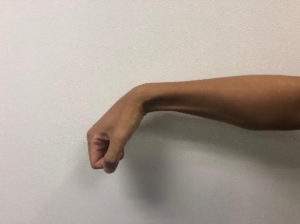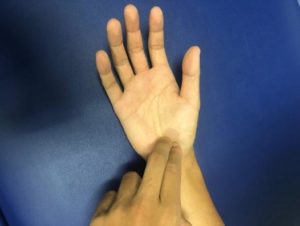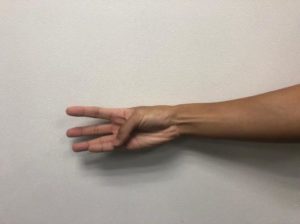Simple tests for common pain conditions for office workers
This post is also available in: 中文
Simple tests for common pain conditions for office workers
Due to the advance of technology, computer works become an essential part of our daily work. With the increase usage of keyboard and mouse, different kind of pain especially involving upper limbs become more and more common. It is vital important is we could detect minor impairment and tackle them before it becomes serious.
In the following, we will introduce some common pain and ways on how to detect them.
1.Tennis elbow
Tennis elbow is the common name given to a condition known as lateral epicondylitis. Lateral epicondylitis results from overusing muscles in the arm and forearm. It is usually caused by repeatedly usuage of wrist and fingers during work. Common symptoms involve Tenderness on lateral elbow, pain when moving palm up or down or twisting movement.
Screening test:
- Keep elbow straight, palm face down, move the hand down and observe for any pain on lateral side of elbow (Figure 1)
- Keep elbow straight, palm face down, move the hand up and act some force on it, observe for any pain on lateral side of elbow (Figure2 )

Figure 1

Figure 2
2.Carpal Tunnel Syndrome
Carpal tunnel syndrome is a compression of the median nerve that runs through the wrist. It is a condition that causes pain, numbness, and tingling in the hand. It is common for people that uses computer for a long time.
Screening test:
- Phalen’s test- performed by flexing the wrist gently as far as possible, then holding this position and observe for any symptoms. (Figure 3)
- Tinel’s sign – performed by lightly tapping the skin over the flexor retinaculum and observe for sensation of tingling or “pins and needles” in the fingers. (Figure 4)

Figure 3

Figure 4
3.De Quervain Disease
It is inflammation of two tendons that control movement of the thumb and their tendon sheath and is common for people repetitively using thumb for work
Screening test:
- Grasps and ulnar deviates the hand when the person has their thumb held within their fist and observe for any pain elicits (Figure 5 & 6)

Figure 5

Figure 6
The above conditions are very common for office workers. Do you have the above conditions after performing those screening test?If you have any questions, please contact your doctor or physiotherapists.



